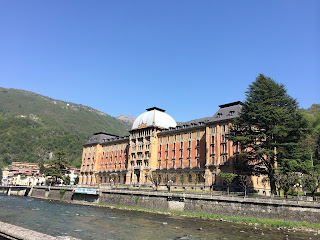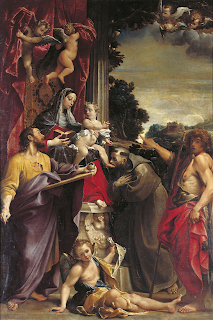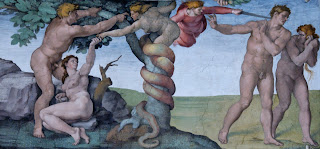Best-selling novelist in Italy now has first title in English
 |
| Sandrone Dazieri has written more than a dozen crime thrillers and has a big following in Italy |
A former chef, Dazieri became a best-selling novelist in his
mid-30s with Attenti al Gorilla (Beware of the Gorilla), which introduced a complex
character, based on himself and even named Sandrone, who suffers from a
personality disorder that makes his behaviour unpredictable yet who solves
crimes and tackles injustices.
The book spawned a series featuring the same character that
not only gained Dazieri enormous popularity among Italian readers but helped
him get work as a screenwriter, especially in the area of TV crime dramas.
He is the main writer on the hugely popular Canale 5 series
Squadra Antimafia, to which he contributed for seven seasons.
Now, for the first time, with the help of an American
translator, Dazieri has moved into the
English language market with Kill the Father, published by Simon & Schuster
in London in January 2017.
Already a top-selling title in Italy, the dark crime
thriller received such good reviews in the literary sections of English
newspapers and magazines that it made the Sunday Times best-sellers list.
The novel features new characters in Colomba Caselli, the
chief of the Rome police’s major crimes unit, and Dante Torre, a man who spent
10 years of his childhood imprisoned by a masked kidnapper and is called in to
help Caselli solve a crime with all the hallmarks of the one committed by his
own captor.
A second title in a planned series featuring the same lead
characters, entitled Kill the Angel, is due to be published in English next
year.
Although he was always an enthusiastic reader of gialli –
the word Italians use for crime novels, based on the tradition of publishing
them with yellow covers – and a fan of crime shows on TV, Dazieri’s education after
high school pointed him in the direction of a career in catering. After graduating from hotel management school
at San Pellegrino Terme, in Lombardy, he spent the next 10 years working as a
chef, at locations all around Italy.
Ultimately, he decided to move to Milan in the hope of
finding work in publishing or journalism and eventually succeeded,
getting a job as a proof reader and writing pieces for the left-wing newspaper, Il
Manifesto, about culture and literature, largely about the crime, thriller and espionage
genres. He enrolled to study political science at college.
 |
| Dazieri's novel Kill the Father features high-ranking Rome policeman Colomba Caselli |
He also became politically active, particular campaigning
against the expansion of nuclear power stations.
Since his success as a writer, with several screenplays to
his name as well as a dozen or so novels, Dazieri has become a more mainstream
figure in the publishing world.
Along with Italian film director Gabriele Salvatores and
producer Maurizio Totti, he set up the Colorado Noir publishing house in 2004
and after four years as chief editor of the Gialli Mondadori crime series, he
now works for the Mondadori company as a literary consultant.
Cremona, a city at the heart of the Po Valley in Lombardy,
has an outstanding Romanesque-Gothic cathedral, its façade and the adjoining baptistry
regarded as among the finest examples of Romanesque architecture in Italy. Inside
there are a number of notable paintings, including fresco decorations on the
side walls of the nave by Giovanni Antonio de’ Sacchis, who painted under the
name of Il Pordenone. Cremona is also
famous for its tradition for violin making, being the home of Giuseppe
Guarneri, Antonio Stradivari and several members of the Amati family.
San Pellegrino Terme, which can be found in Val Brembana in
the province of Bergamo, is well known as the birthplace of the mineral waters
bearing the name of the town. San Pellegrino water is to be found in
supermarkets and on restaurant tables all over the world. The water was always held to have
health-enhancing properties and its reputation helped San Pellegrino became a
fashionable spa town in the late 19th and early 20th
centuries, a favourite haunt with wealthy industrialists from Bergamo. Some wonderful Art Nouveau architecture
remains as a legacy, in the shape of the San Pellegrino Thermal Baths, the
Casino and the Grand Hotel. The resort’s
popularity declined somewhat in the mid-20th century and these fine
buildings were closed, but efforts have been made recently to restore them and
allow the public back inside for a glimpse of the opulence of the town in its
heyday.
















